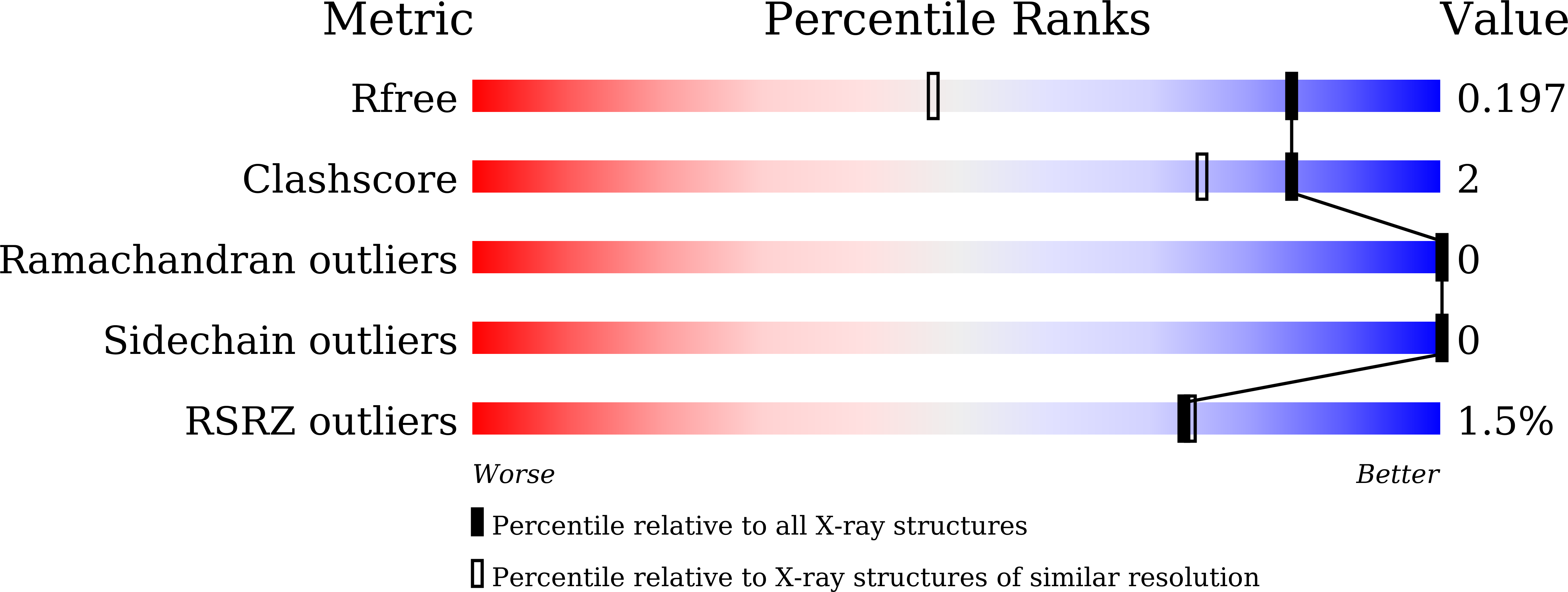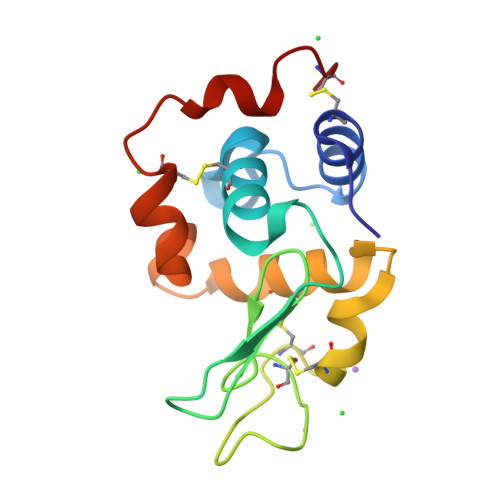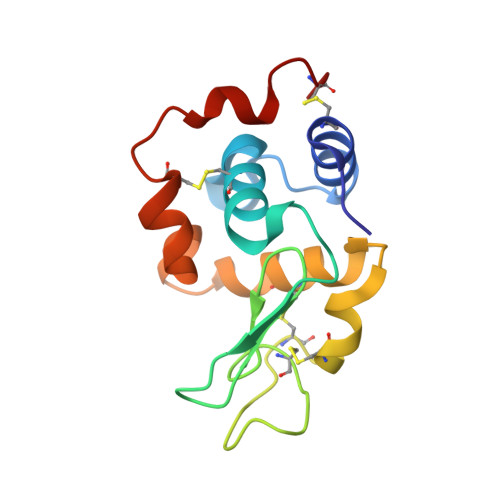Efficient Chemical Protein Synthesis using Fmoc-Masked N-Terminal Cysteine in Peptide Thioester Segments.
Kar, A., Mannuthodikayil, J., Singh, S., Biswas, A., Dubey, P., Das, A., Mandal, K.(2020) Angew Chem Int Ed Engl 59: 14796-14801
- PubMed: 32333711
- DOI: https://doi.org/10.1002/anie.202000491
- Primary Citation of Related Structures:
6LFH - PubMed Abstract:
We report an operationally simple method to facilitate chemical protein synthesis by fully convergent and one-pot native chemical ligations utilizing the fluorenylmethyloxycarbonyl (Fmoc) moiety as an N-masking group of the N-terminal cysteine of the middle peptide thioester segment(s). The Fmoc group is stable to the harsh oxidative conditions frequently used to generate peptide thioesters from peptide hydrazide or o-aminoanilide. The ready availability of Fmoc-Cys(Trt)-OH, which is routinely used in Fmoc solid-phase peptide synthesis, where the Fmoc group is pre-installed on cysteine residue, minimizes additional steps required for the temporary protection of the N-terminal cysteinyl peptides. The Fmoc group is readily removed after ligation by short exposure (<7 min) to 20 % piperidine at pH 11 in aqueous conditions at room temperature. Subsequent native chemical ligation reactions can be performed in presence of piperidine in the same solution at pH 7.
Organizational Affiliation:
TIFR Centre for Interdisciplinary Sciences, Tata Institute of Fundamental Research Hyderabad, 36/p Gopanpally, Hyderabad, 500046, Telangana, India.




















